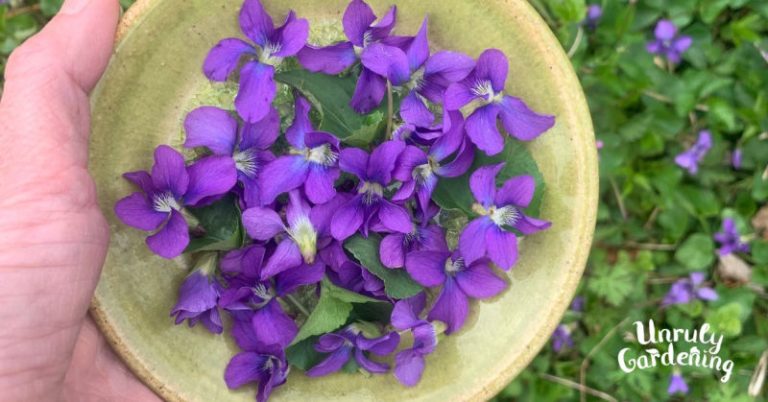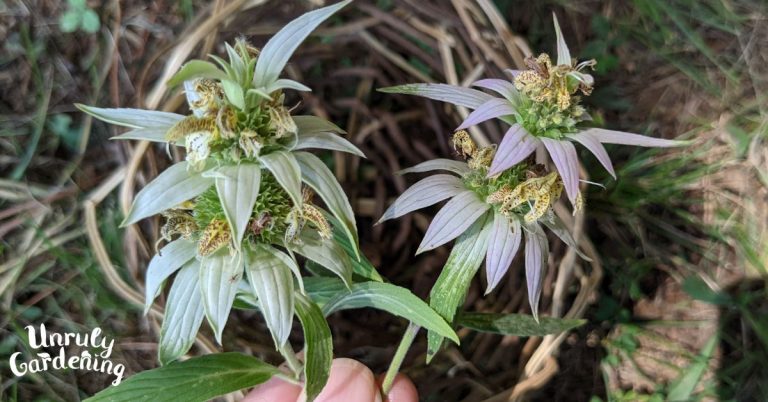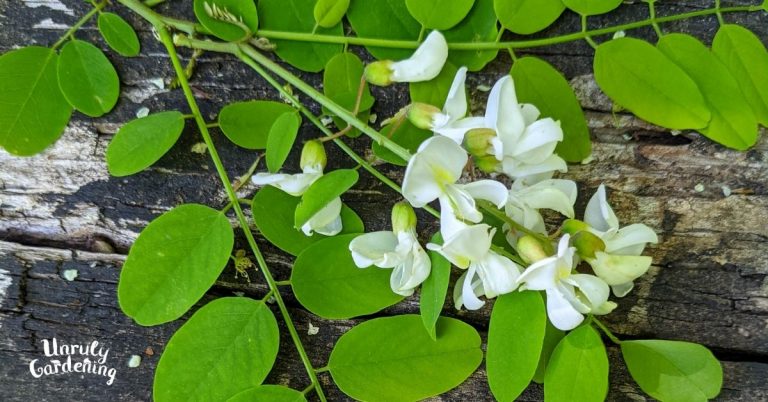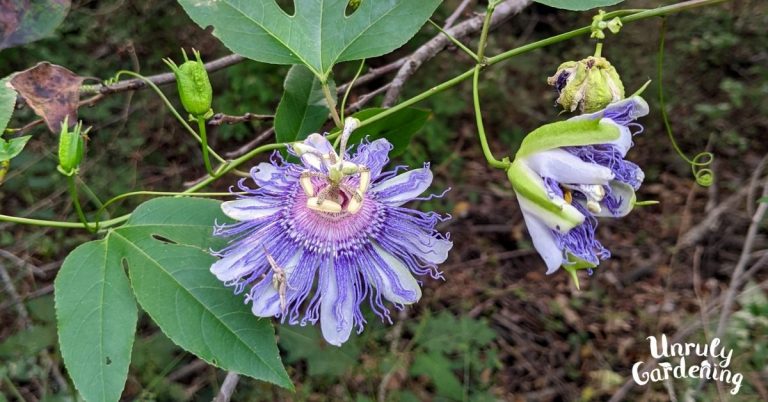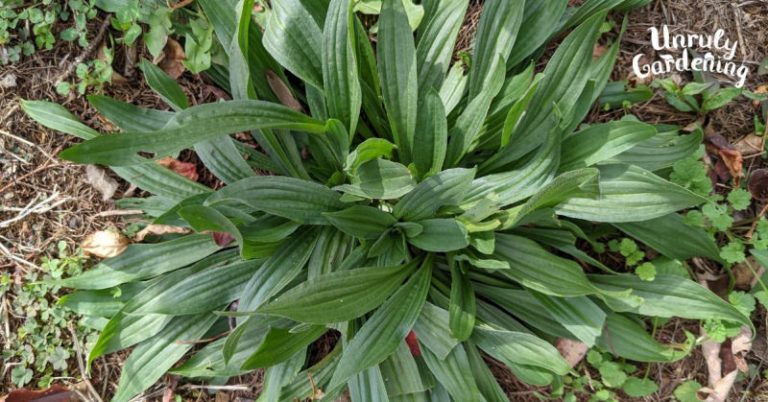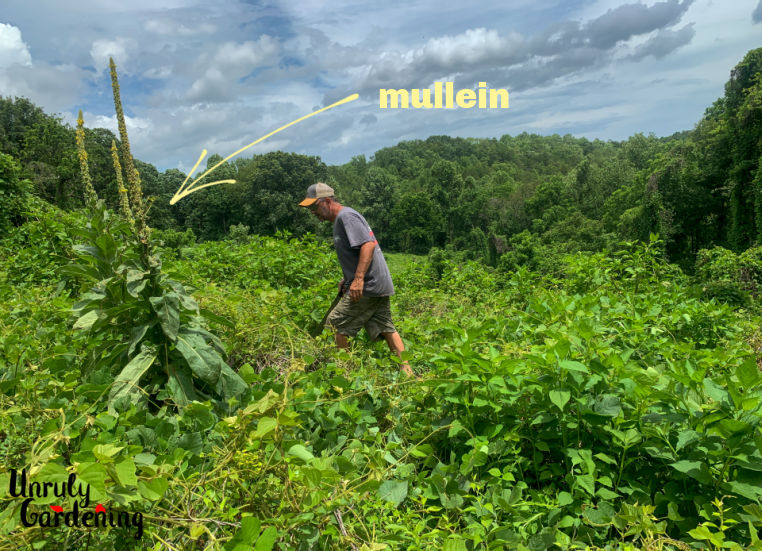Foraging & Using Cleavers
Cleavers is a common edible weed that also has herbal benefits. Learn how to identify and forage cleavers, plus ways to use it!
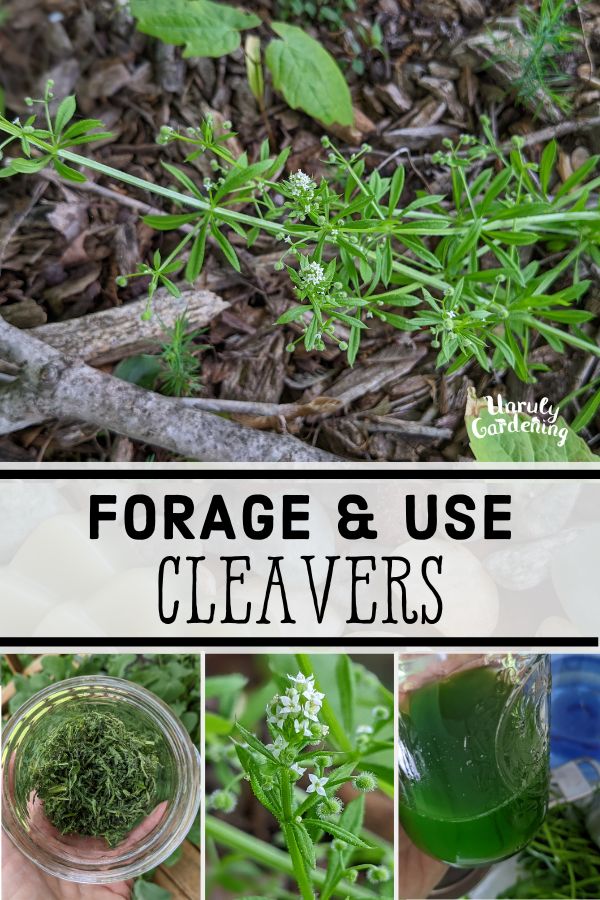
Cleavers (Galium aparine) is a widely found spring weed that you’re likely to find in your garden, flower beds, or while exploring the forest around you. Other common names for cleavers include: sticky willy, sticky weed, bedstraw, and goosegrass.
It has long sprawling stems and leaves that feel sticky, in a velcro-like way, because they’re covered in tiny hook like hairs. Because of this texture, the plant can stick to dogs with long fur, your clothes, or nearby plants.

How to Identify Cleavers
There are over 600 species of Galium worldwide and many of them have some level of herbal properties. Here, we’re focused on Galium aparine, which is arguably the most commonly used Galium spp when it comes to herbalism.

Stem
The stems are square and covered with fine hook-like hairs or bristles.
Leaves
Look for the leaves growing in a whorl (a circular pattern) around the stem, usually 6 or 8 leaves per whorl.
The leaves don’t have their own tiny leaf stems (petioles) – instead they grow right out of the main stem.
There are large gaps of space between leaf whorls along the stem.
The leaves also have bristly, sticky hairs growing from them, just like the stem.

Flowers
The white flowers are tiny with four petals and clusters of them grow from the leaf axil. (This means they grow right out from the same place the leaves do.)
They later develop into small round seed balls, covered in hooked hairs that also stick to everything, as a means of spreading the seed far and wide.

Nearby Plants
These plants tend to grow in the same area as cleavers, and are also useful to forage!
Chickweed is a nutritious and delicious spring edible, with external benefits as well.
See my article: Foraging & Using Chickweed for ID tips, and how to harvest and use.
Wild Violets offer pretty purple flowers, benefits to pollinators, and many ways that humans can use them for food and natural medicine.
See my article: Foraging Violets: How to Identify, Harvest & Use! for more information.

A Foraging Note
While cleavers is safe for most people and ages, there are some people who find that it irritates their skin and/or causes a rash when harvesting. If this happens to you, it’s recommended to leave cleavers alone and not try it externally or internally. If you turn out to be sensitive to cleavers, never fear – there are many other forageable plants to explore!
How Cleavers Tastes
Fresh young cleavers has a light pleasant taste, which reminds me of fresh garden lettuce. As the plant ages, the distinctive texture makes it feel kind of weird in your mouth, and less pleasant to eat. Because of its high water content, it’s often juiced or used fresh as a poultice rather than eaten in a salad. The juice and tea are kind of grassy flavored.
Cleavers Lookalikes
There are a ton of Galium species growing throughout the world, and a lot of them look alike, but the good news is none are known to be overtly toxic to our knowledge. However, they may contain varying levels of coumarins (phytochemicals that can cause liver issues in high doses), so spend some time identifying the cleavers species found in your particular area. The only two lookalikes in the area we live in are Sweet Woodruff and Galium Trifolum.

Galium triflorum (Fragrant Bedstraw), is often found in the same spots as cleavers where we live, only there’s a lot less of it. It looks similar to cleavers but has broader, rounder leaves which are arranged in whorls of 6 leaves, and it’s not so “sticky”.
Sweet Woodruff (Galium odoratum) is a plant you might find in your flower beds, or local garden centers. It’s in the same family as cleavers, but doesn’t have the same velcro-tendencies. (Photo will be added in a few weeks – my sweet woodruff patch keeps becoming the victim of enthusiastic weed-eating, so is currently not photographable.)

Where Cleavers Grow
I find cleavers growing throughout our woods, especially in areas that are moist and semi-shady, such as around our creeks. They often grow tangled into large patches of chickweed.
Depending on your home’s biome, you may find them growing as weeds in your flower garden beds or veggie patches. That photo above is some cleavers I found growing in the mulch under a sugar maple tree, that my home’s driveway circles around.
According to the USDA, the native status of cleavers is debated. It widely grows in the US, Canada, and parts of South America, but some think it may originally be native to Europe and Asia. Regardless of its place of origin, cleavers is found in abundance throughout the world!

Can you grow cleavers from seed?
Yes! If you don’t have cleavers growing where you live, check out Strictly Medicinal Herbs for Galium aparine (cleavers) seeds. They’re quite easy to grow. You can winter sow them, or plant them in a tray and put them in the fridge for one month of cold treatment before removing to a more temperate area – like your front porch or another protected place.
When to Forage Cleavers
Cleavers are annual plants that can be found in spring, around the same time that dogwoods, apple trees, and lilacs are blooming. Chickweed is also in abundance when cleavers is harvestable, and you’ll often find the two growing in the same area.
Cleavers reach their peak harvesting time around the same time that morels are in season, so keep your eyes out for those too!
Related article: 12 Tips for Foraging Morel Mushrooms
Harvest the stems and leaves (but not the roots) just before flowering or when they’re flowering. Cleavers is not normally used once it has gone to seed, though the seeds can be processed to make a type of coffee. (This isn’t something I’ve personally tried, yet!)

How to Dry Cleavers
Because it has a high water content, you might find it challenging to dry cleavers if you live in a humid climate. We have really hot and humid summers where we live, but spring is pretty mild and we’re able to easily air dry cleavers on drying screens with plenty of air flow.
If your climate is ultra humid, try drying cleavers on the very lowest setting your dehydrator has, until the plant is completely dry and breaks easily.
Store dried herbs in brown paper bags or glass jars out of direct sunlight and heat. Shelf life is about 9 months, or as long as the herb is green and smells fresh. Once dried herbs have faded to a drab brown color, their potency has been lost and they should be composted and replaced with a fresher batch.

Uses for Cleavers
In herbalism, cleavers is considered cooling and is used to treat itchy rashes, such as those from poison ivy or poison oak. It’s also used as a “spring tonic” or lymphatic (something that helps out a stuck lymph system.)
Is cleavers safe for pets?
According to one of our favorite reference books, Herbs for Pets by Gregory Tilford and Mary Wullf, cleavers is a safe herb and may be particularly useful for cats with kidney issues and pets with skin issues. They suggest a glycerin tincture for dogs, cats, and birds; and that horses, rabbits, and other herbivores can be fed the fresh herb. As with all plant introductions, watch for allergic reactions and ask a vet if you have any particular questions or concerns.
Field Poultice
My favorite way to use cleavers is as a quick field poultice. When I’m out foraging or exploring nature, I’ll inevitably get a bug bite, bee sting, or accidentally grab a handful of poison ivy or stinging nettle without noticing.
Because of its high water content, cleavers makes an excellent poultice. Just rub and crush the plant between your fingers so that it releases its juices, then rub the resulting liquid over the offending bite or sting.
Or, if you’ve accidentally touched poison ivy or oak, you can grab up a handful of cleavers, rub the juice over the exposed fingers or skin, wipe it off with some tree leaves (tulip poplar works well), then repeat that several times to “wash” your hands and help minimize exposure.

Cleavers Juice (Succus)
To make juice, blend freshly picked cleavers (stems and leaves) with a small amount of water and strain. It makes a nice fresh green color and tastes a bit grassy. Drink a small amount (about a teaspoon) at a time first to see how your body reacts.
The juice is also cooling and soothing when you directly apply it to minor sunburn or scratches.
Since it’s perishable, use cleavers juice right away, store it in the fridge for about 24 hours, or freeze in ice trays for longer storage. You could also add 25% 100 proof alcohol to preserve it for several months. (Example ratio: 3/4 cup strained juice + 1/4 cup 100 proof alcohol.)

Cleavers Oil
The dried herb can be infused into oil and used to make salve and balms. I like to include it in homemade deodorants, since your underarms are rich in lymph nodes. (See my recipe for DIY Herbal Deodorant for Women.)
To make an infused oil:
- Fill a small half-pint jar about halfway with dried and chopped cleavers.
- Pour oil over the dried herbs until it almost reaches the top of the jar, leaving a little bit of headspace for expansion.
- Place in a cupboard for 4 to 6 weeks, shaking every day or as often as you remember to.
- Strain and use the cleavers infused oil in salves, balms, massage oils, deodorants, and more!
Cleavers Salve
This salve can be used for lymphatic massage, or applied to bug bites, chapped skin, eczema, or other minor skin irritations.
To make the salve:
- Combine 3.5 ounces of infused oil with 0.5 ounces of beeswax in a heat proof jar, or an empty tin can (for easy cleanup).
- Place the jar/can down into a small saucepan containing a few inches of water, forming a double boiler of sorts.
- Heat over a medium to medium-low burner until the wax is completely melted.
- Pour into tins and cool, then cover with a lid.
- Shelf life is about 1 year, or as long as the salve smells good. (Old salve will smell like rancid oil.)
Resources & Further Reading
Cech, Richo. Making Plant Medicine. Williams, OR: Horizon Herbs, 2000. Print.
Native American Ethnobotany Database – entry for Galium aparine.
Tilford, Gregory L. and Mary L. Wulff. Herbs for Pets. Mount Joy, PA. Fox Chapel Publishing, 2009. Print.
USDA database, SPECIES: Galium aparine.
USDA database, SPECIES: Galium boreale, G. triflorum.
Wood, Matthew. The Earthwise Herbal, Volume I. Berkeley, CA: North Atlantic Books, 2008. Print.
Our articles are for information and idea-sharing only. While we aim for 100% accuracy, it is solely up to the reader to provide proper identification. Be sure to seek out local foraging classes and plant walks, and invest in foraging guides suitable for the area you live in, since some wild foods may have adverse effect.

